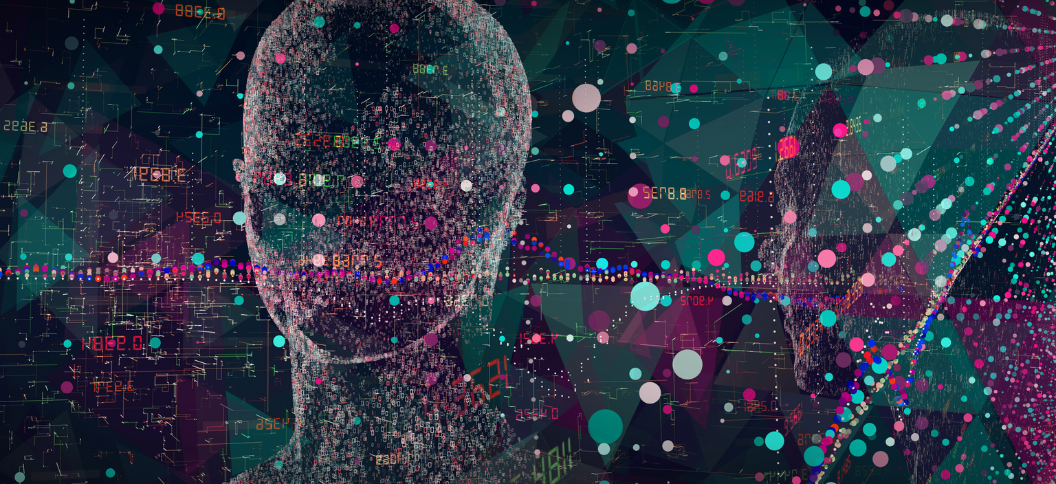
BLOG

The Current State of Cybercrime; the Role of AI in Cybersecurity
Cybercrime is a constantly evolving threat that affects people and organisations of all sizes. In 2022, cyberattacks increased by 38% according to Check Point research, further compounding the growth of 300% seen in 2020, with iGaming and e-commerce businesses being the primary targets. Cybercriminals use a variety of techniques to gain unauthorised access to sensitive information, such as phishing, malware, and ransomware attacks. The consequences of these attacks can be devastating, including loss of data, financial damage, and reputational harm.
With the growing complexity of cybercrime, traditional cybersecurity measures like firewalls and antivirus software are no longer enough. Cybersecurity experts are turning to artificial intelligence (AI) and advance cybersecurity defences such as XDR and managed SOC/SIEM to help detect and prevent cyber threats. But, AI technology is a double-edged sword that can both aid cybercriminals and help prevent cyber attacks.
How Artificial Intelligence is Aiding Cybercriminals
AI technology is making it easier for cybercriminals to launch sophisticated attacks. For example, AI-powered bots can be used to automate phishing attacks, making it easier to target a large number of people at once with very personalised approaches. These bots can analyse social media profiles and other online data to create targeted and personalised messages that appears legitimate and are more likely to be opened and clicked on.
In addition, AI can be used to create deepfakes, which are fake images, videos or audio recordings that are indistinguishable from real ones. Famously, deepfakes have been used to simulate voices of singers such as The Weekend and Drake and also the actor Bruce Willis in a Russian mobile phone commercial, but it can be used to impersonate people in authority within a company, such as a CEO or network administrators or even used to spread false information, which can be used for malicious purposes.
Another way AI is aiding cybercriminals is through the use of machine learning algorithms. These algorithms can be used to analyse large datasets and identify vulnerabilities in software systems, which can then be exploited by cybercriminals.
Examples of AI-Powered Cyber Attacks
AI-powered cyber attacks are becoming more common, and their impact can be devastating. One example is the 2017 WannaCry ransomware attack, which affected over 200,000 computers in 150 countries. The attack was carried out using an AI-powered worm that was able to spread rapidly and infect vulnerable systems.
Another example is the use of AI-powered bots to launch distributed denial of service (DDoS) attacks. DDoS attacks involve overwhelming a website or server with traffic, making it inaccessible. AI-powered bots can generate massive amounts of traffic, which can be used to take down even the most secure websites. Read about Continent 8’s experience over Christmas and World Cup 2022.
Impact of AI on Cybersecurity and How C8 Secure Use This Technology
While AI technology is making it easier for cybercriminals to launch attacks, it’s also being used to prevent them. C8 Secure’s AI-powered cybersecurity solutions, including our Cloud WAAP (Web Application and API Protection), Security Information and Event Management (SIEM) and XDR (Extended Detection and Response) solutions, can analyse vast amounts of data in real-time and identify anomalous behaviour and potential threats before they occur.
C8 Secure use AI-powered anomaly detection and security analytics in C8 Secure’s SIEM and Cloud WAAP, which can identify unusual behaviour on a network or website that could indicate a cyber attack and alert our cybersecurity experts in real-time. This technology can learn from past attacks and adapt to new threats, making it a powerful tool for cybersecurity experts. C8 Secure’s WAAP can also run vulnerability scans against the website it protects, and suggests additional rules and configuration to harden the existing protection – essentially configuring itself! This is an important feature in the world of DevOps with CI/CD (Continuous Integration and Continuous Delivery). This concept helps businesses deliver new, working features earlier and more frequently. They can do this safe in the knowledge that C8 Secure’s WAAP offers blanket protection of their website.
C8 Secure’s AI-powered XDR (Extended Endpoint Protection and Response (anti-virus on steroids)), can detect and prevent malware attacks on individual devices. Our solution can analyse patterns of behaviour on a device and identify potential threats in real-time.
Ethics and Concerns Around AI and Cybercrime
While AI technology has the potential to revolutionise cybersecurity, it also raises ethical concerns. For example, AI-powered cybersecurity solutions can be used to monitor employees and collect sensitive information about them. This raises questions about privacy and the use of personal data.
Another concern is the potential for AI-powered cyber attacks to cause widespread damage. As AI technology becomes more advanced, cybercriminals may be able to launch attacks that are more sophisticated and harder to detect. This could lead to widespread disruption and chaos. This will require cybersecurity experts to constantly adapt and develop new technologies to stay ahead of cybercriminals.
Preparing for the Future of Cybercrime
To prepare for the future of cybercrime with AI, organisations need to take a proactive approach to cybersecurity. This means investing in AI-powered cybersecurity solutions that can detect and prevent cyber threats in real-time – like C8 Secure’s WAAP, SIEM and XDR solutions.
Organisations also need to prioritise cybersecurity training for employees, as human error and compromised credentials are a common cause of cyber attacks. In fact, according to Verizon’s 2022 Data Breaches Investigations Report, human error is responsible for a massive 82% of data breaches. Therefore, companies need to include training on how to identify phishing emails, create strong passwords, and use security software effectively.
Finally, organisations need to be prepared for the worst-case scenario. This means having a plan in place for how to respond to a cyber attack, including how to recover lost data and how to communicate with stakeholders. C8 Secure’s Cloud backup service combined with the managed XDR and SIEM solution can help detect, prevent and recover from cyber attacks, including ransomware.
Conclusion
AI technology is changing the game when it comes to cybercrime. While it’s making it easier for cybercriminals to launch attacks, it’s also being used to prevent them. As AI technology becomes more advanced, we can expect to see both more sophisticated cyber attacks and more powerful cybersecurity solutions.
To stay ahead of the curve, organisations need to take cybersecurity seriously and invest in the latest AI-powered technologies. By doing so, they can protect themselves from the ever-evolving threat of cybercrime and stay ahead of cybercriminals.
Are you protected? C8 Secure has full spectrum cyber security solutions to defend your infrastructure against a growing number of threats. Contact info@c8secure.com to learn more and speak to one of our experts.
RECENT POSTS
5 Steps to Reduce Your Risk of a Ransomware Attack
23 Feb, 2023
Listening to the news, you would be correct in being concerned about the extreme levels of ransomware attacks across the world. And, more importantly, whether your company is prepared to weather such an attack.
DOWNLOAD BROCHURE
For more information, please download our solutions brochure







